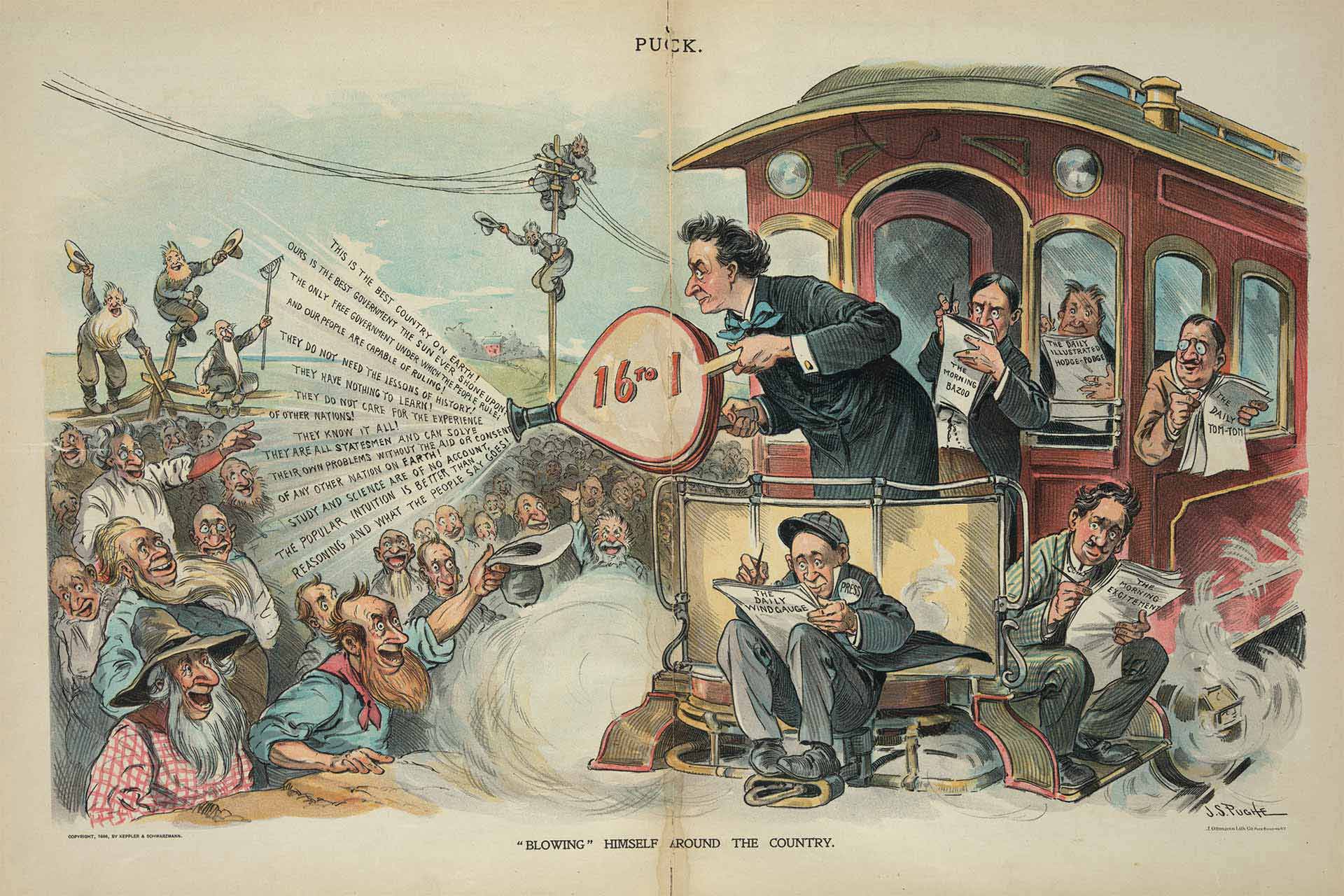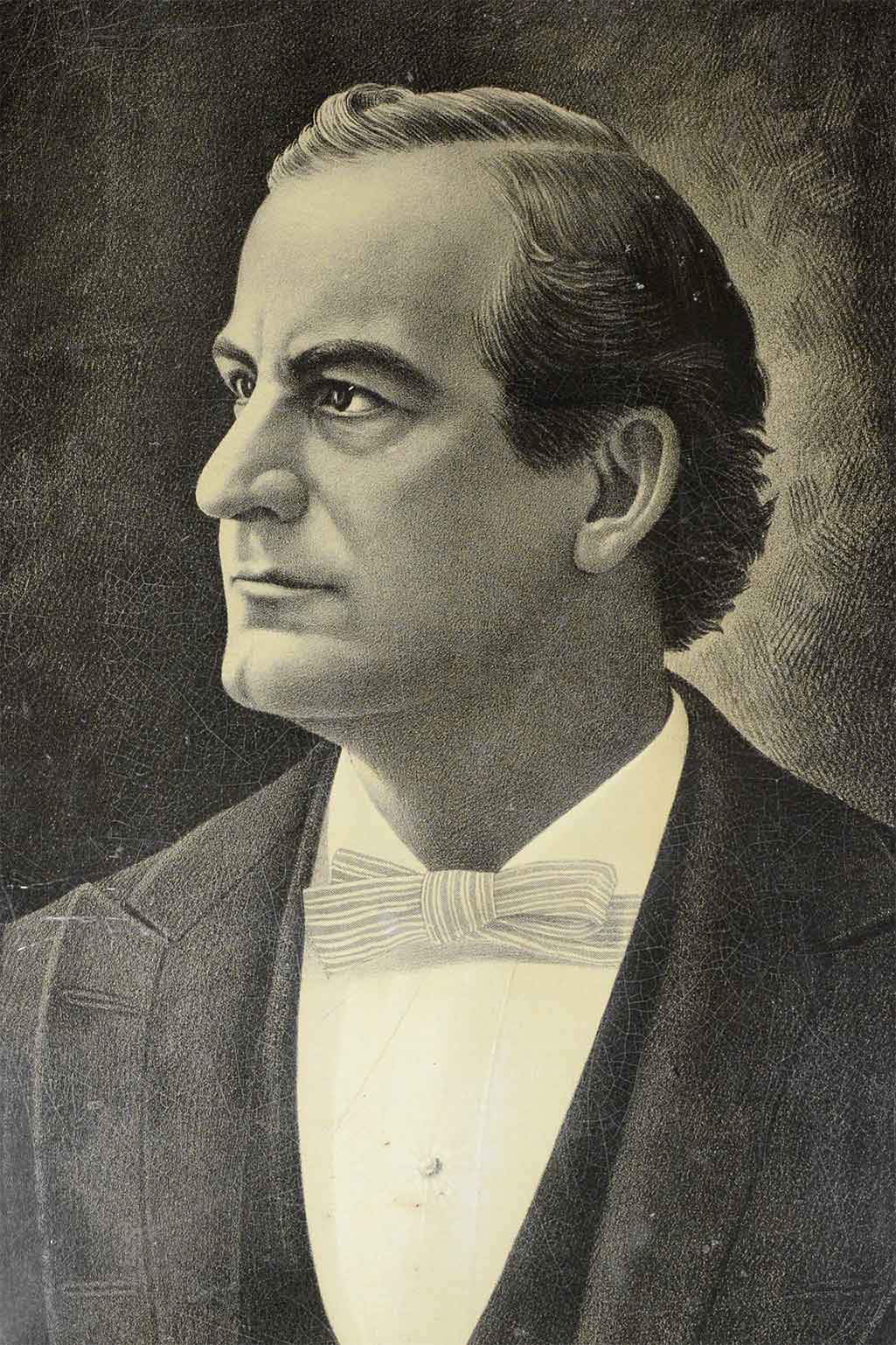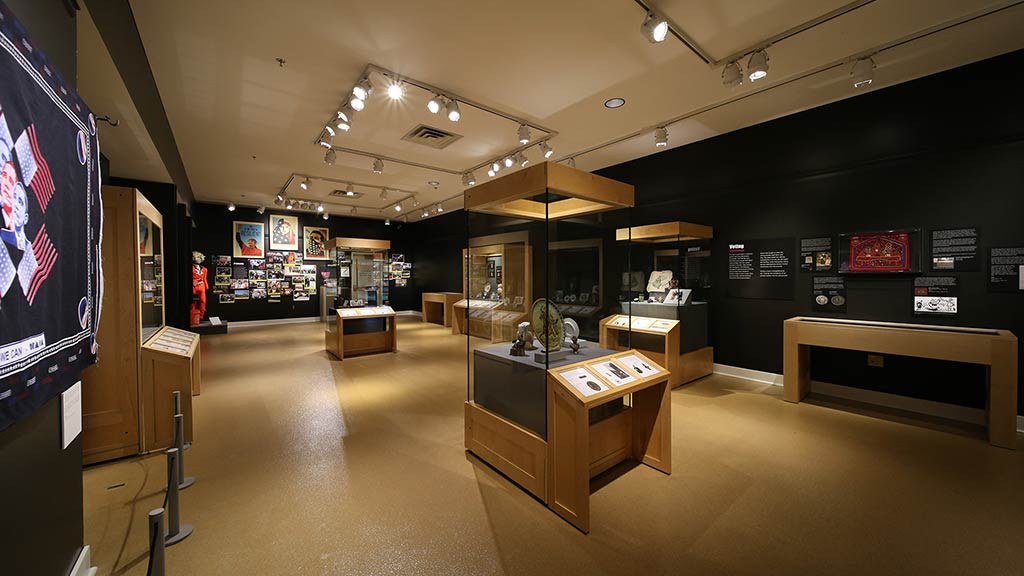
The Boy Orator of the Platte on a Plate
- Post Date: 11/13/2020
- Author: Nathan Tye, curator
- Reading Time: 5 minute read
Among the most interesting objects I find in the People’s Collection and now on display in the Debates, Decisions, Demands exhibit is this simple tin tray printed with William Jennings Bryan’s portrait. It hardly stands out among the other objects in the exhibit, yet it embodies a transformational presidential candidate whose campaign reshaped the way politicians sought the presidency.
Bryan was born in Salem, Illinois, and attended school at Illinois College, in Jacksonville. However, he is more closely associated with his adopted home of Lincoln, Nebraska. It is in Lincoln that he launched his political career as a Democratic congressman in a deeply Republican state. Lauded for his oratorical skill and youthful energy, Bryan was deemed the “Boy Orator of the Platte,” after the river that crosses Nebraska.
Nebraska author Mari Sandoz captured the energy Bryan’s rhetorical skills unleashed in her classic biography of her father, Old Jules. “[Bryan] established the issues, swung into the tariff and ended on free silver, and when he sat down the crowd was still as a lull in a dry-land thunderstorm. Then in a frenzy of applause the audience arose, climbed to the benches, and swept forward upon the prophet come to them” (113).
-
 "Blowing" himself around the country Artist: J.S. Pughe N.Y. 1896 Published by Keppler & Schwarzmann. Library of Congress.(external link)
"Blowing" himself around the country Artist: J.S. Pughe N.Y. 1896 Published by Keppler & Schwarzmann. Library of Congress.(external link)
Eventually, Bryan clinched the Democratic presidential nomination three times (and lost every election), served as Woodrow Wilson’s first secretary of state (before resigning over his criticism of Wilson’s war policy), and garnered renewed attention in the 1920s during the Scopes Monkey Trial. In one of history’s small coincidences, the educator on trial for teaching evolution, John T. Scopes, was also born in Salem, Illinois and briefly attended the University of Illinois (as seen in the Urbana Daily Courier, June 3, 1925 (external link)).
Bryan’s 1896 presidential campaign, to which this plate likely dates, transformed American politics. Although Bryan lost, “he voiced a romantic, class-aware protest against an order increasingly being governed by the intellectual assumptions and material might of big corporations, in both finance and manufacturing,” according to his biographer Michael Kazin in A Godly Hero: The Life of William Jennings Bryan. Bryan fought for “the people,” as he understood them—farmers, wage workers, and overlooked rural voters (45).
Bryan ascended to the Democratic and Populist Party nomination (he ran as a Fusionist candidate with the support of both parties) as a two-term congressman from Nebraska. Making the leap from rural Representative to presidential candidate was nearly impossible, but Bryan’s rhetorical skill and support for the unlimited coinage of silver drove his popularity. The type of metal used in the national currency standard was one of the most important issues in the 1896 campaign. Bryan also called for a progressive income tax on wealthy Americans, a right to unionization, and stringent banking regulations. Silver remained the keystone of Populist thought. Silver supporters, often called “silver bugs,” believed its use (at a ratio of 16 ounces of silver to one ounce of gold) alongside the gold standard would improve the economic lot of Midwest and Western populations through increased inflation, which, it was hoped, would raise crop prices and ease farmers’ debts.
With the Democratic nomination and support of the Populists, Bryan crisscrossed the nation. He spoke in communities big and small, including here in Champaign, Illinois on July 13, 1896 (documented in The Champaign Daily News, Volume 1, Number 295, July 14, 1896 (external link)). Bryan challenged established campaign norms. At the time, many believed that actively campaigning on one’s behalf for the presidency was unseemly, rather “the office should seek the man.” With this travels and big personality, Bryan transformed campaigning. In doing so, “a politics of character thus blended into a politics of celebrity as Bryan’s voice became known throughout the land,” (Kazin 49).
Bryan’s candidacy and the debate over silver and gold produced an unprecedented amount of campaign paraphernalia for both sides. Hundreds of different types of objects, from buttons and ribbons, to bug-shaped pins, soap figurines, and tin trays, appeared. Examples of the latter three are included in the exhibit. The simplicity of this tray belies the ferocity of the monetary standard issue and the then radical campaign tactics of William Jennings Bryan.
-
 Serving Tray 2017.06.0158
Serving Tray 2017.06.0158
-
- Share:
- Subscribe to Newletter
- Giving

